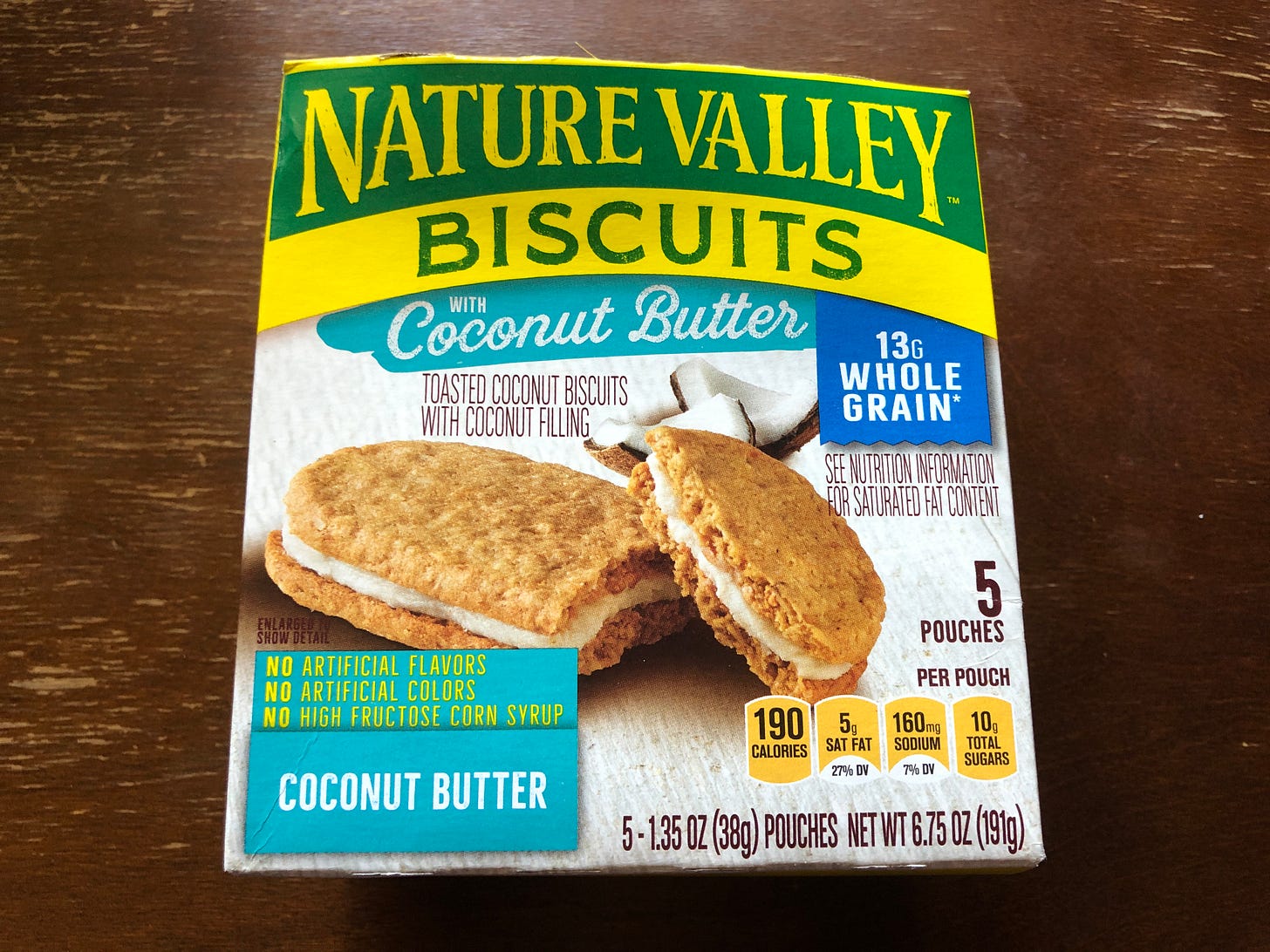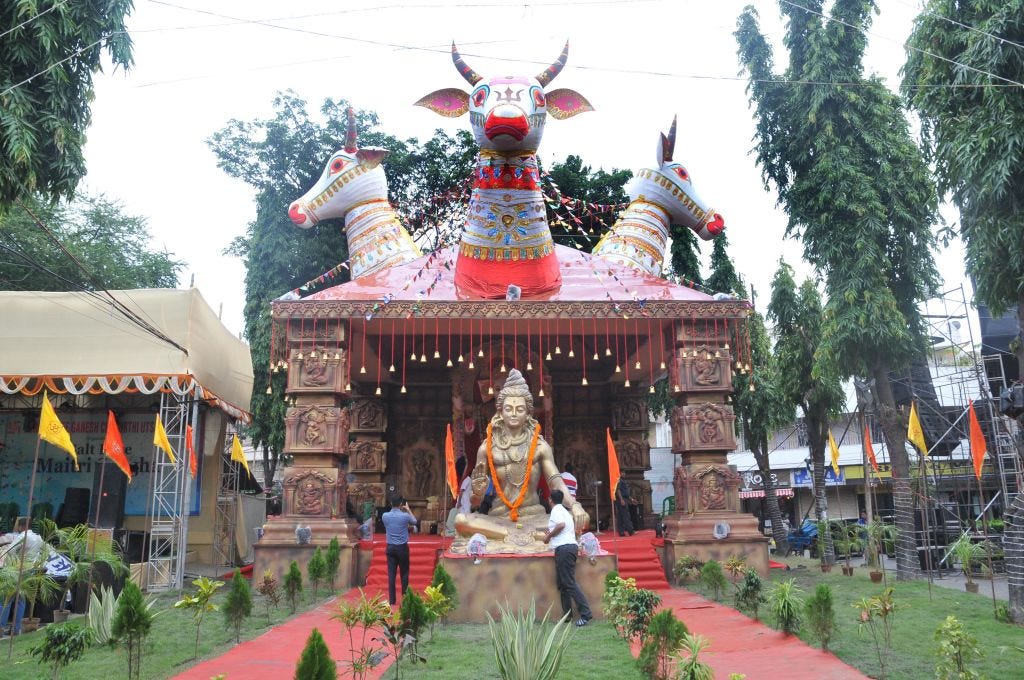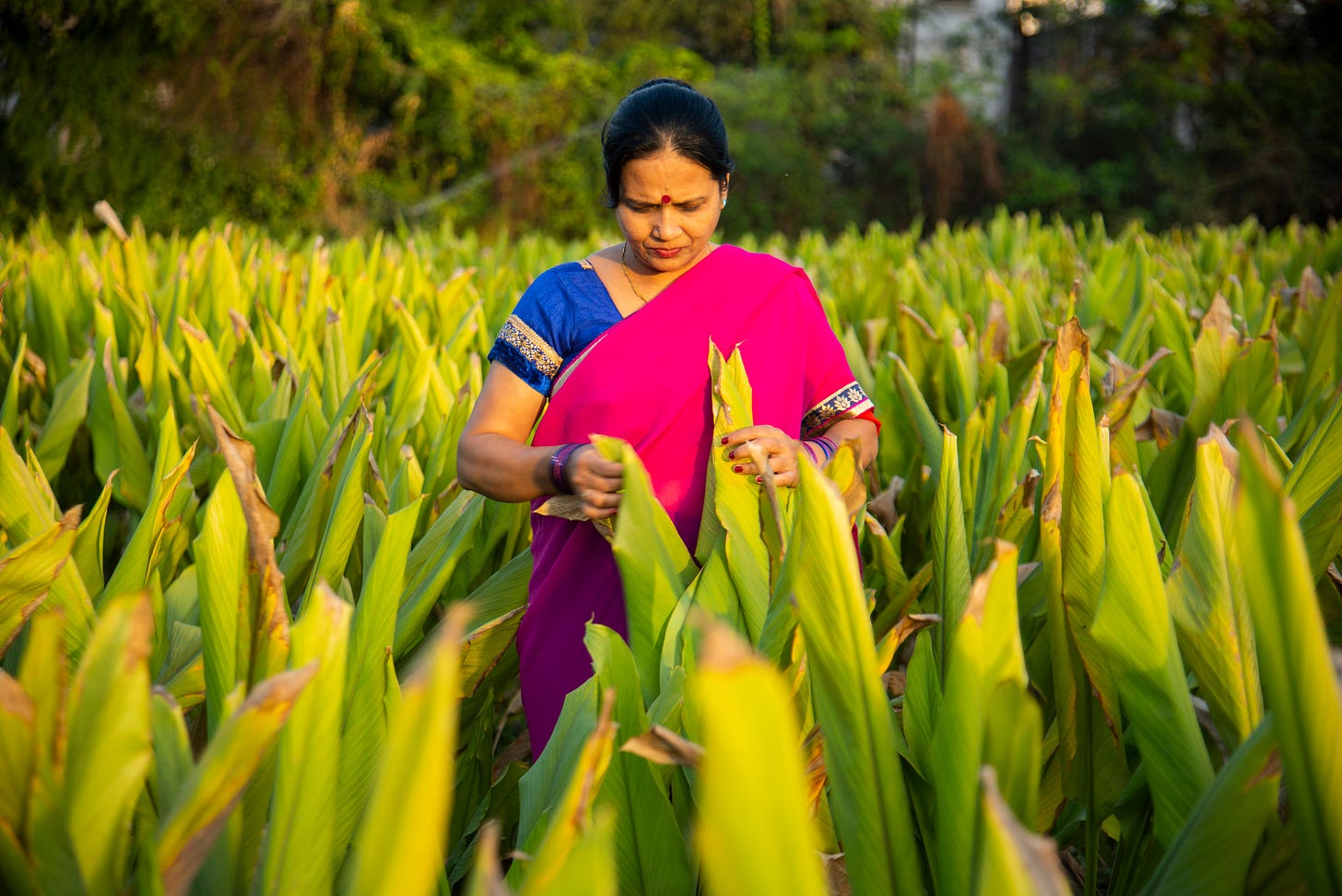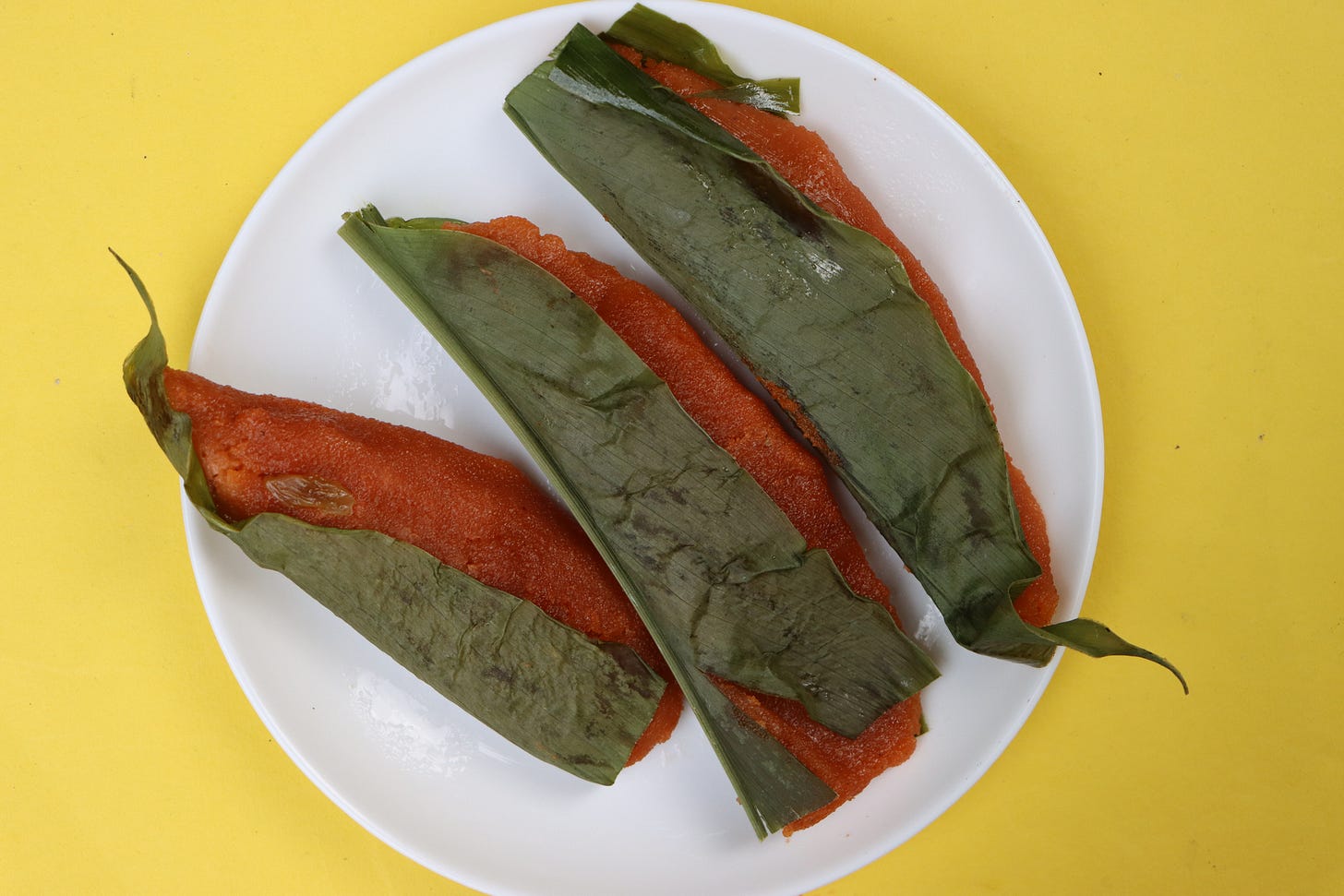Not to simp for General Mills but GOOD LORD where did these come from? New favorite food product, by a very long shot. (Tell me your current favorite snacky snack in the comments, please.) -Katherine
If you haven’t become a paid subscriber yet, please consider it. The money goes straight to paying freelancers a good rate - much better than most publications. And if not that, click on the heart icon above so I know you’re reading! Please enjoy the article below by Joanna Lobo.
A Harvest Festival’s Prize Leaf
By Joanna Lobo
Seasonal monsoons in Goa bring out a variety of greens from backyards to forests, and the most beloved might be turmeric leaves. During the brief period that they come to life, the oblong perennials feature in a number of local dishes, most importantly patoleo (plural; patoli is singular), a Goan sweet made with local ingredients: coconut, red rice, and jaggery or madachem godd (coconut palm sap), mixed together and then steamed, single serving, in the turmeric leaves.
Goa, a small state on India’s west coast, has two major religious communities, Hindus and Catholics, and both make patoleo for festivals. Catholics make it for the Feast of Our Lady of Assumption, sometimes affectionately called Patoleanchem Fest. Hindus make it for Nag Panchami (a day for worshipping snake deities), as well as Ganesh Chaturthi festival. On the second Sunday of the month of fasting that precedes the festival, patoleo are served as naivedya (sweet offering to the god). It is also made on the first day of fasting and offered to Ganesha’s mother. In addition, the leaves alone are used as decoration for the maatt or matoli, a structure of local greens and fruits that surrounds the idol of Ganesh in people’s homes.
To make patoleo, local red rice soaked overnight gets whipped into a paste, laid out on washed turmeric leaves, and filled with a mixture of jaggery and freshly grated coconut, and steamed for a few minutes. The jaggery adds color and a chocolate-like sweetness to the mixture, and turmeric leaves offer fragrance and flavor.
Patoli doesn’t find its way into restaurants. It’s typically made at home and distributed among family and friends.
This year I made patoleo for the first time. It was interesting to see how a simple leaf can transform a pile of ingredients. 🥬
More Food Reading:
“Does anybody complicate Cheerios by saying the wheat has to be grown on the side of a mountain and the terroir in North Dakota is better than Kansas and all this horseshit?” RIP Fred Franzia, the peoples’ winemaker.
Little-known, totally fascinating: the history of African Nova Scotian culture and food. Read this article and then this one.
If you liked the newsletter today, please forward it to someone who’d enjoy it, and tap the heart icon above or below, which will help me reach more readers. I appreciate your help, y’all!
This newsletter is edited by Katherine Spiers, host of the podcast Smart Mouth.
A TableCakes Production.
Want to contribute? Here are the submission guidelines.







